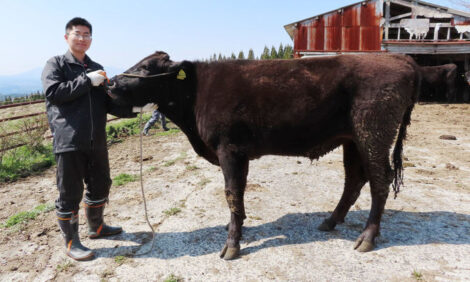



Calf Rearing Tips
With the current boom in the Irish dairy industry, many Irish beef farmers are considering the benefits of buying dairy-bred calves.Teagasc has offered these tips to make the most of the initial 12 week feeding period, which is essential for the performance of the calves for the rest of the year.
The key points are feeding them a high quality milk replacer, feeding enough of it, getting them onto solid feed early and keeping a high health status in the calf rearing shed.
.JPG)
-
The traditional two litres of milk replacer, fed twice a day, is no longer considered adequate. Most calves should be getting at least six litres of milk replacer per day (1.3 gallons) where the concentration is 125g per litre of water.
-
From three weeks of age, calves can be fed once per day – make sure they are fed at the same time every day and ideally in the morning.
-
Nipple feeding is preferable to feeding from a bucket/trough.
-
The milk replacer should be at least 25 per cent crude protein (on a dry matter basis) – remember you generally get what you pay for.
-
Calves fed coarse starter mix eat more and have higher weight gains than calves fed pelleted calf starters.
-
Keep the ration fresh by only feeding what they will eat in a day.
-
Calves that have free access to water eat more starter ration and have better ruminal development. Make sure there is always clean water available.
-
While calves need some source of long roughage, e.g., straw, do not over-feed it to them as it will reduce their ration intake and they can develop ‘hay bellies’.
-
If calves start to scour, isolate them from other calves to avoid cross infection, get electrolytes into them and do not stop feeding them milk replacer.
-
Calves should not be weaned until they are eating at least 1kg of calf ration.
-
Wean them gradually off milk replacer over a seven- to 10-day period.


